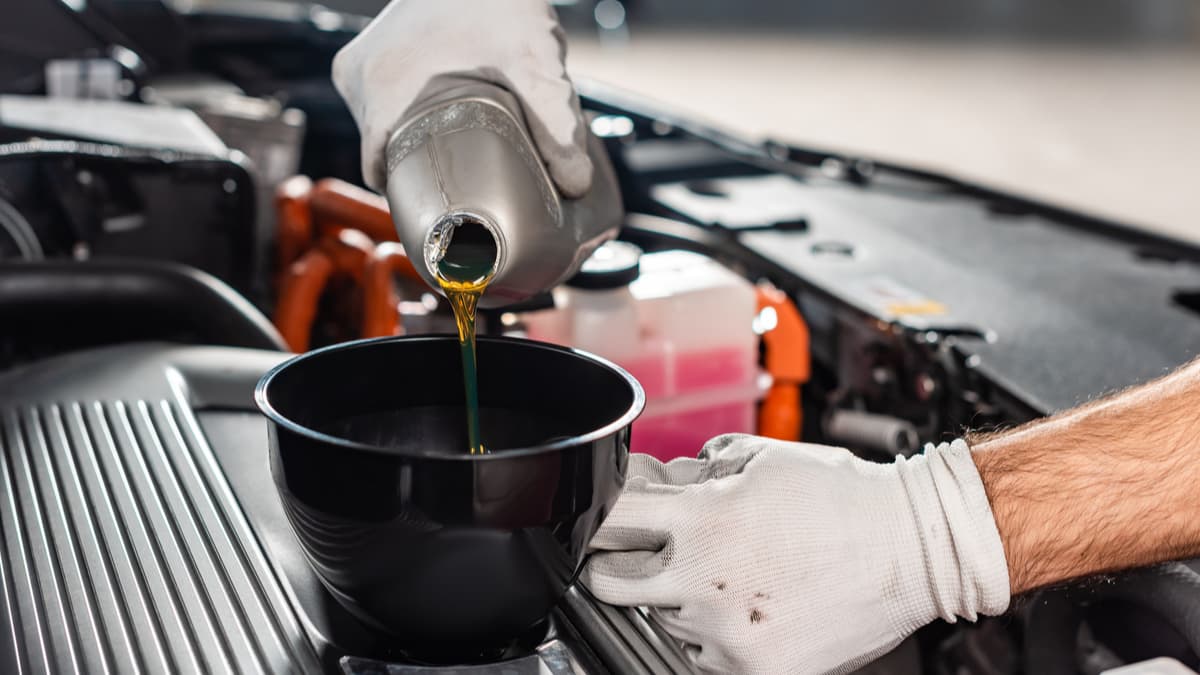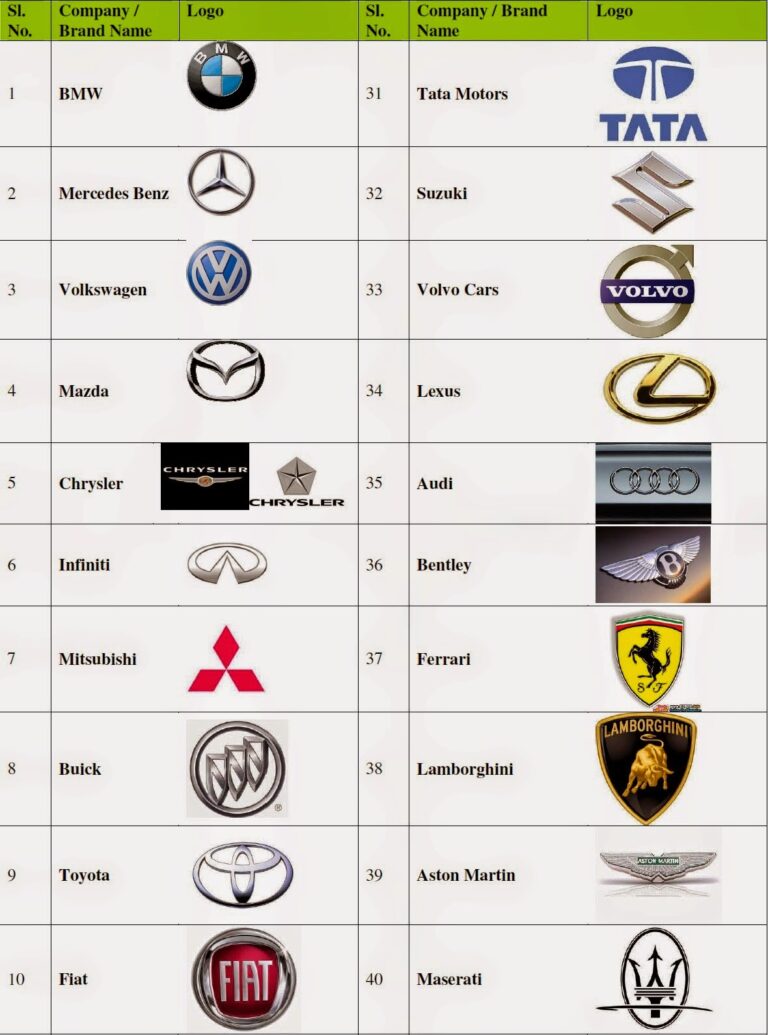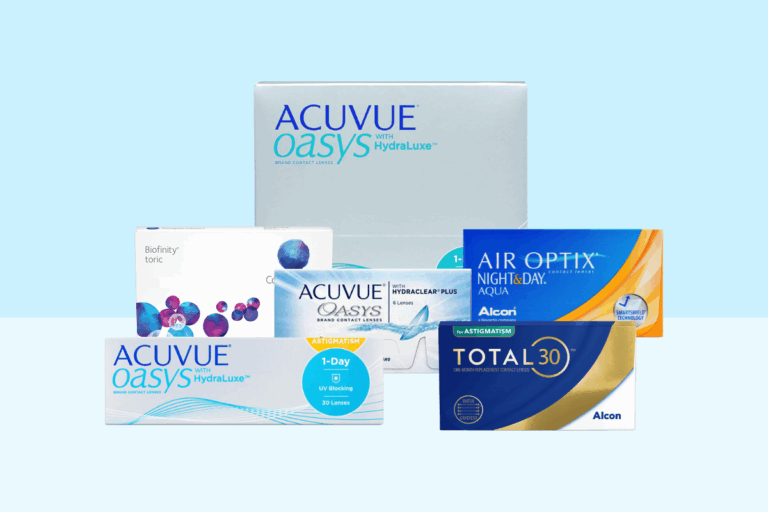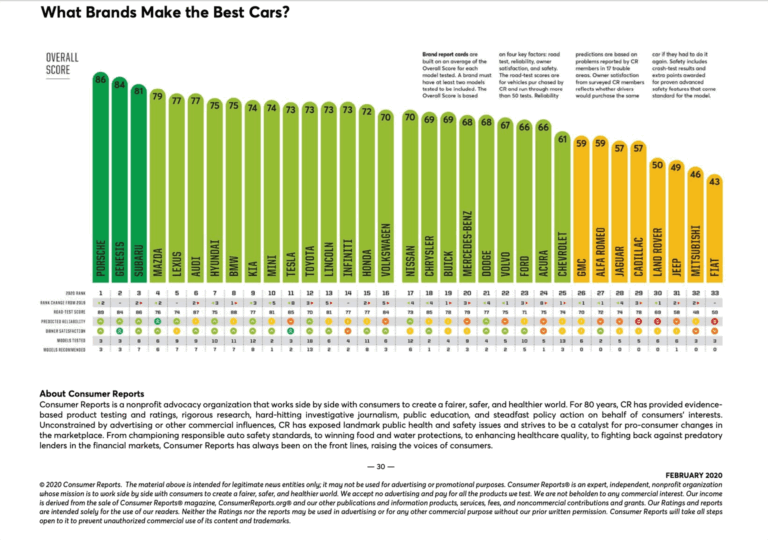Brand New Car Oil Change: The Essential First Step for a Long, Healthy Engine Life
Brand New Car Oil Change: The Essential First Step for a Long, Healthy Engine Life cars.truckstrend.com
Congratulations on your new car! That intoxicating "new car smell," the pristine interior, and the smooth, quiet hum of a perfectly tuned engine are all part of the excitement. But amidst the joy of ownership, there’s a critical maintenance step that often gets overlooked or misunderstood: the brand new car oil change. This isn’t just another routine service; it’s a foundational act of care that sets the stage for your vehicle’s long-term health, performance, and reliability. Far from a mere formality, the first oil change plays a vital role in removing manufacturing impurities and ensuring your engine’s delicate internal components break in correctly. Understanding its importance and executing it properly can significantly impact your car’s lifespan and save you from costly repairs down the road.
The "Break-In" Period and Its Impact on Engine Oil
Brand New Car Oil Change: The Essential First Step for a Long, Healthy Engine Life
Modern car engines are marvels of engineering, built with incredibly precise tolerances. However, even with advanced manufacturing techniques, a brand new engine needs a "break-in" period. During this initial phase, typically the first few thousand miles, various components like piston rings, cylinder walls, bearings, and gears are seating themselves against each other. This process, while essential for the engine to achieve its optimal performance and efficiency, inevitably generates microscopic metallic particles, machining debris, and other contaminants.
The factory-fill oil in a new car often contains specific additives designed to aid in this break-in process. However, as the engine components rub together and shed these minute fragments, the oil becomes laden with these impurities. If left in the engine for too long, these abrasive particles can cause accelerated wear, reduce the oil’s lubricating effectiveness, and potentially lead to long-term damage. Therefore, the first oil change is not just about replacing old oil; it’s about flushing out these critical initial contaminants, ensuring a clean slate for the engine’s operational life. Skipping this early change is akin to running a marathon with sand in your shoes – it will eventually cause friction and wear where it shouldn’t.
When to Perform the First Oil Change? Decoding the Timing
The timing of your brand new car’s first oil change is a subject of much debate, often leading to confusion for new car owners.
Manufacturer Recommendations vs. "Early Bird" Approach:
Your owner’s manual is your primary guide, and it will typically specify an oil change interval, often ranging from 5,000 to 10,000 miles or 6 to 12 months, whichever comes first. This recommendation is based on the assumption of normal driving conditions and the use of high-quality synthetic oils designed for extended drain intervals.
However, many experienced mechanics and automotive enthusiasts advocate for an earlier first oil change, often between 1,000 and 3,000 miles, or within the first 3-6 months. The rationale behind this "early bird" approach is to promptly remove the initial surge of break-in contaminants before they can circulate extensively and potentially cause wear. While modern manufacturing has reduced the amount of break-in debris compared to older engines, it’s still present, and a proactive early change can provide an added layer of protection.
Factors Influencing Timing:

- Driving Style: If you’re driving aggressively, frequently in stop-and-go traffic, or towing heavy loads, your engine will experience more stress and generate more contaminants. An earlier change might be beneficial.
- Climate: Extreme hot or cold weather can also impact oil life and engine wear, potentially warranting a slightly earlier change.
- Engine Type: High-performance engines, turbocharged engines, or those with direct injection might benefit more from an early flush due to their inherent operational characteristics.
- Peace of Mind: For many, the slightly added cost of an early oil change is a small price for the peace of mind knowing they’ve done everything possible to protect their investment.

Ultimately, while adhering to the owner’s manual ensures warranty compliance, an early first oil change is a wise preventative measure for optimal engine health.
Choosing the Right Oil: More Than Just a Brand
The type of oil you put into your brand new car is just as crucial as when you change it. Modern engines are designed with specific oil requirements in mind, and using the wrong type or viscosity can lead to reduced performance, increased wear, and potentially void your warranty.
- Full Synthetic Oil: This is the most common and recommended type for brand new cars today. Full synthetic oils offer superior lubrication, better resistance to thermal breakdown, and improved performance in extreme temperatures compared to conventional or synthetic blend oils. They are engineered to provide maximum protection and allow for longer drain intervals.
- Synthetic Blend Oil: A mix of conventional and synthetic base oils. While better than conventional, it typically doesn’t offer the full benefits of a 100% synthetic oil. Less common for factory-fill and initial replacements in new vehicles.
- Viscosity Grade (e.g., 0W-20, 5W-30): This number (e.g., "0W-20") indicates the oil’s thickness at different temperatures. The "W" stands for "winter," and the number before it denotes the oil’s viscosity in cold temperatures. The second number indicates its viscosity at operating temperature. Always refer to your owner’s manual for the exact viscosity grade recommended by the manufacturer. Using an incorrect viscosity can lead to improper lubrication and increased engine wear.
- API/ILSAC Certifications: Look for oils with the latest American Petroleum Institute (API) and International Lubricant Standardization and Approval Committee (ILSAC) certifications. These certifications ensure the oil meets specific performance standards for modern engines, including fuel economy, emission control, and engine protection. For example, API SP or ILSAC GF-6 are current standards.

When in doubt, stick strictly to the specifications listed in your vehicle’s owner’s manual. This includes not just the type (synthetic) and viscosity, but also any specific manufacturer approvals or codes (e.g., Dexos, BMW LL-01, VW 504 00).
The Process: DIY vs. Professional Service
Deciding whether to perform the first oil change yourself or have a professional do it depends on your comfort level, tools, and understanding of warranty requirements.
Do-It-Yourself (DIY):
- Pros: Cost-saving (paying only for parts), sense of accomplishment, better understanding of your vehicle.
- Cons: Requires specific tools (jack, jack stands, oil filter wrench, drain pan), proper disposal of used oil (environmental responsibility), risk of mistakes (stripping drain plug, cross-threading filter), and potential warranty implications if not documented correctly.
- Brief Steps: Safely lift the car, locate and loosen the drain plug to empty old oil, replace the oil filter, replace the drain plug, lower the car, and refill with the correct amount and type of new oil. Always check the oil level with the dipstick. Keep all receipts for oil and filter as proof of maintenance.
Professional Service:
- Pros: Expertise and specialized tools, proper documentation for warranty purposes, convenience, correct disposal of used oil, often includes a multi-point inspection (tires, fluids, filters), and peace of mind.
- Cons: Higher cost compared to DIY.
- Where to Go:
- Dealership: Often the safest bet for a brand new car. They use OEM (Original Equipment Manufacturer) parts and fluids, their technicians are factory-trained, and their service records are officially linked to your vehicle’s warranty. While typically more expensive, it offers unparalleled peace of mind for your first service.
- Reputable Independent Shop: A good option if you have a trusted mechanic. Ensure they use high-quality, manufacturer-spec oil and filters, and provide detailed receipts for your records. They can often be more affordable than dealerships.
For your very first oil change on a brand new vehicle, especially if you’re not an experienced DIY mechanic, taking it to the dealership or a highly reputable independent shop is often the recommended path to ensure everything is done correctly and your warranty remains intact.
Beyond the Oil Change: Other First Service Considerations
While the oil change is paramount, the first service appointment is also an opportune time for other crucial checks and minor maintenance items that contribute to your new car’s longevity:
- Tire Rotation: Even new tires benefit from rotation to ensure even wear, prolonging their life and maintaining balanced handling.
- Fluid Checks and Top-Offs: Technicians should inspect and top off other essential fluids like coolant, brake fluid, power steering fluid (if applicable), and windshield washer fluid.
- Filter Checks: Air filter and cabin air filter should be inspected for any early signs of contamination, though they typically last longer than oil filters.
- General Inspection: A thorough visual inspection of the undercarriage, suspension components, brakes, and belts can catch any manufacturing anomalies or early wear issues.
- Software Updates: Dealerships may also check for and apply any available software updates for your vehicle’s various electronic control units (ECUs).
- Documentation: Always ensure you receive a detailed invoice and service record. These documents are vital for maintaining your vehicle’s warranty and resale value.
Common Misconceptions and Challenges
- "Modern engines don’t need an early oil change." While engine manufacturing has improved, the break-in process still generates contaminants. An early change is a small investment in long-term health.
- "Any oil will do as long as it’s the right viscosity." Absolutely not. Modern engines have precise requirements for oil type (synthetic), certifications (API, ILSAC), and manufacturer-specific approvals. Using the wrong oil can lead to premature wear, reduced fuel economy, and potential engine damage.
- "Changing my own oil will void my warranty." This is a common fear, but generally untrue, provided you use the correct oil and filter, perform the service correctly, and keep meticulous records (receipts for parts, date, mileage). The Magnuson-Moss Warranty Act protects consumers’ rights to perform their own maintenance. However, if engine damage is directly caused by improper DIY service (e.g., using the wrong oil, not tightening the drain plug), then the warranty claim could be denied.
- Challenge: Overwhelm from conflicting advice. Solution: Prioritize your owner’s manual. It’s the definitive guide from the manufacturer who designed your engine. If seeking outside advice, ensure it comes from a certified mechanic or a highly reputable source.
- Challenge: Perceived high cost. Solution: View the first oil change, especially with full synthetic oil, as an investment. The cost is negligible compared to potential engine repairs down the line.
Price Table: Brand New Car Oil Change
The cost of a brand new car oil change can vary significantly based on the vehicle type, oil required, and the service provider. Below is an estimated price range for typical services focusing on the recommended full synthetic oil for new cars.
| Service Category | Oil Type Recommended | Estimated Cost Range (USD) | Key Inclusions | Considerations & Notes |
|---|---|---|---|---|
| Independent Shop (Standard) | Full Synthetic (OEM Spec) | $70 – $110 | Oil, Oil Filter, Labor, Basic Visual Check | Good balance of cost and quality. Ensure they use the correct oil grade & type. |
| Independent Shop (Premium) | Full Synthetic (Premium Brand) | $90 – $130 | Premium Full Synthetic Oil, High-Quality Filter, Labor, Multi-Point Inspection | May use top-tier oil brands. Often includes a more thorough inspection. |
| Dealership Service | Manufacturer-Specific Full Synthetic | $100 – $160+ | OEM Oil, OEM Oil Filter, Labor, Comprehensive Multi-Point Inspection, Service Record Update | Ensures compliance with warranty. Access to specific OEM parts and specialized diagnostics. Higher cost. |
| DIY (Do-It-Yourself) | Full Synthetic (Your Choice) | $40 – $80 (Parts Only) | Cost of Oil & Filter | Requires tools, technical knowledge, and proper disposal of used oil. No labor cost. Keep receipts for warranty. |
| First Service Package (Dealership) | Full Synthetic (OEM Spec) | $150 – $250+ (often includes more) | Oil Change, Tire Rotation, Fluid Checks, General Inspection, Software Updates | Some dealerships offer initial service packages that bundle the first oil change with other checks. |
Note: Prices are estimates and can vary based on vehicle make/model, geographic location, and specific service provider promotions.
Frequently Asked Questions (FAQ) about Brand New Car Oil Change
Q1: Do I really need an early oil change for a new car, even if the manual says 10,000 miles?
A1: While modern engines are built with high precision, the "break-in" period still generates microscopic metallic particles and manufacturing debris. An early oil change (e.g., 1,000-3,000 miles) helps flush these contaminants out, providing an extra layer of protection and ensuring optimal engine longevity. It’s a proactive measure beyond the minimum requirement.
Q2: What kind of oil should I use for my brand new car?
A2: Always refer to your owner’s manual. Most new cars require full synthetic oil of a specific viscosity grade (e.g., 0W-20, 5W-30) and often a particular manufacturer approval code (e.g., Dexos, LL-01). Using the exact specified oil is crucial for performance, protection, and warranty compliance.
Q3: Will changing my own oil void my new car’s warranty?
A3: No, not if done correctly. The Magnuson-Moss Warranty Act protects your right to perform your own maintenance. However, you must use the correct parts (oil and filter), perform the service properly, and keep detailed records (receipts for parts, date, mileage) as proof of maintenance. If engine damage is directly caused by improper DIY service, then the warranty claim could be denied.
Q4: How often should I change the oil after the first one?
A4: After the initial break-in oil change, follow the intervals recommended in your owner’s manual. This is typically between 5,000 to 10,000 miles or 6 to 12 months for most modern vehicles using full synthetic oil, depending on your driving conditions. Your car might also have an oil life monitoring system that indicates when a change is due.
Q5: Is it okay to go over the recommended mileage for the first oil change?
A5: It’s best to avoid going significantly over, especially for the crucial first oil change. The longer you wait, the longer those initial break-in contaminants circulate in your engine, potentially causing increased wear. Adhering to or even slightly anticipating the recommended interval is always safer.
Q6: Should I go to the dealership or an independent mechanic for my new car’s first oil change?
A6: For the very first oil change, many prefer the dealership. They use OEM parts, their technicians are factory-trained, and their service records directly update your vehicle’s history, which is beneficial for warranty and resale. A reputable independent mechanic is also a viable option, provided they use the correct OEM-spec parts and fluids and provide detailed records.
Q7: What happens if I don’t change the oil on time, especially the first one?
A7: Skipping or delaying the first oil change means that break-in contaminants continue to circulate, leading to accelerated wear on internal engine components. Over time, this can result in reduced engine efficiency, increased oil consumption, premature component failure, and ultimately, a significantly shortened engine lifespan. It could also potentially jeopardize your warranty if direct causation can be proven.
Conclusion
The brand new car oil change is more than just a routine service; it’s a critical investment in the longevity and performance of your vehicle. By understanding the importance of the break-in period, adhering to proper oil specifications, and choosing the right time and method for this initial service, you are laying a strong foundation for thousands of miles of trouble-free driving. Whether you opt for an early proactive change or strictly follow the manufacturer’s initial recommendations, ensuring this first maintenance step is executed diligently will pay dividends in engine health, reliability, and ultimately, the enjoyment you get from your brand new car. Treat your engine right from day one, and it will serve you faithfully for years to come.






